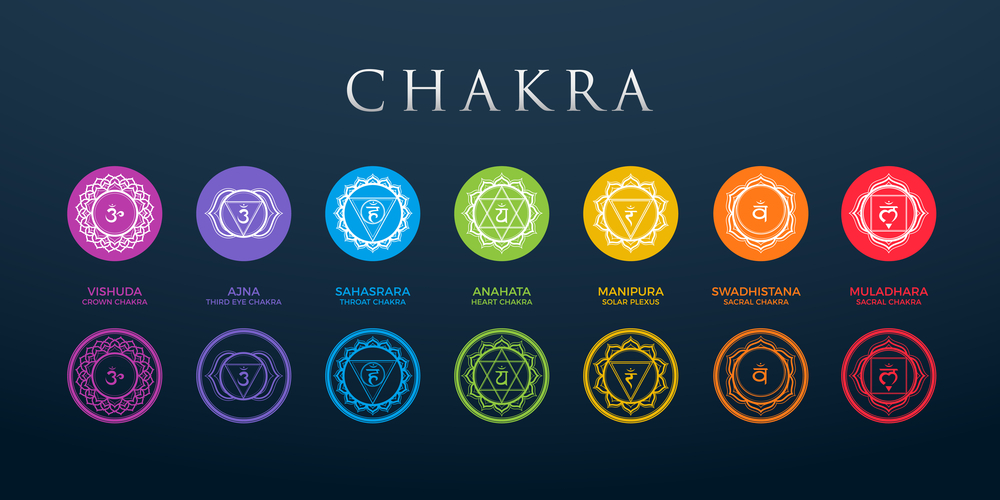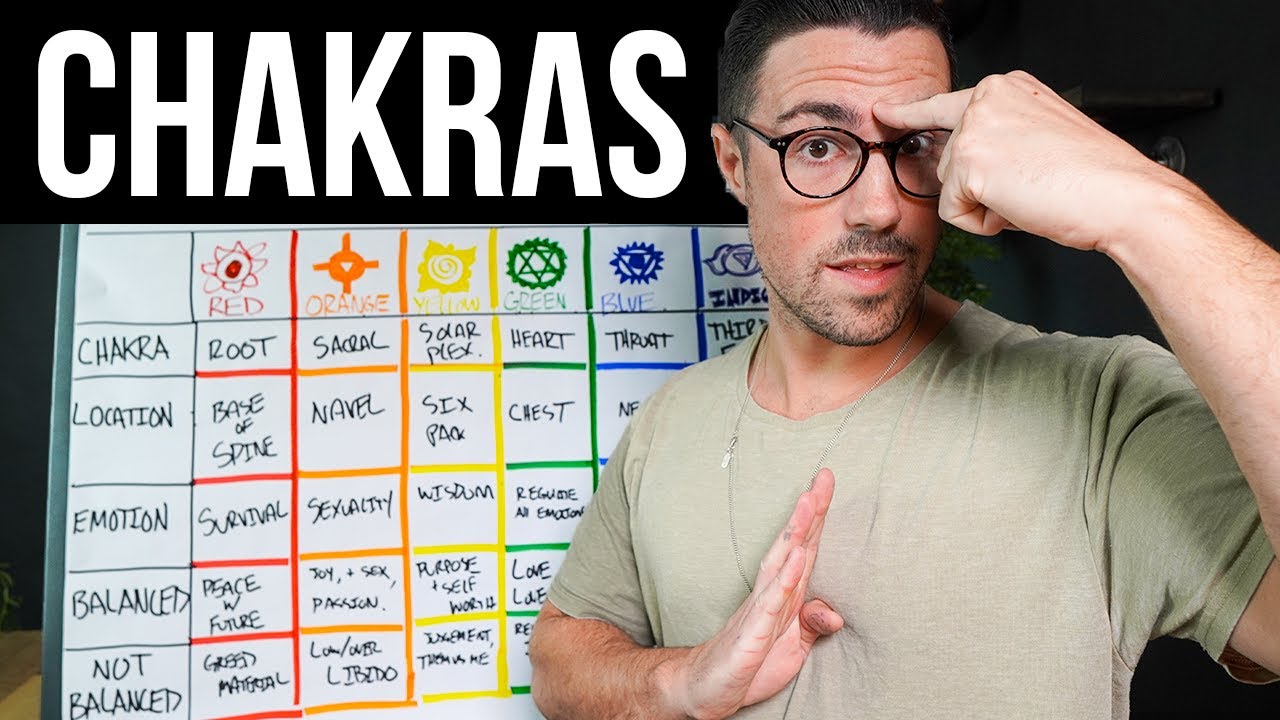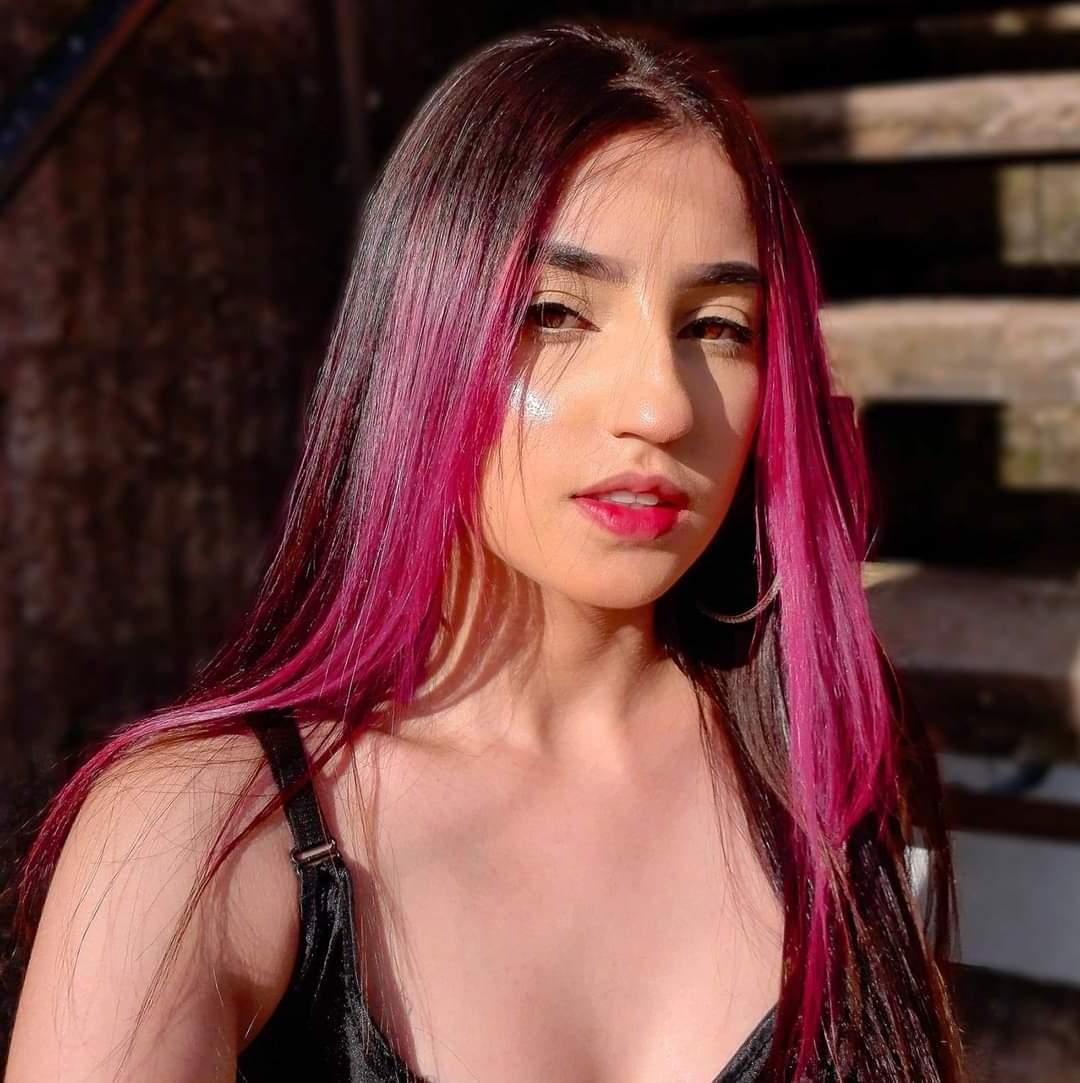What Do You Need To Know About The Colors Of The Chakras?
The colors of the chakras frequently represent an individual's emotional, spiritual, and physical states. They are thus essential to a person's body. The chakra is made up of the major organs of the body as well as certain nerve bundles that continue to circulate throughout the body.
Author:Evelyn AdamsReviewer:Mia ThompsonJan 11, 202413K Shares176.6K Views

The colors of the chakrasfrequently represent an individual's emotional, spiritual, and physical states. They are thus essential to a person's body. The chakra is made up of the major organs of the body as well as certain nerve bundles that continue to circulate throughout the body.
Most of the time, there is a link between colors and our bodily feelings. Energy cannot pass through our bodies if they obstruct and stop flowing since they essentially take the shape of a fluid. The reason for this is that the spirit, soul, mind, and whole body are intimately connected.
Serious sickness may result from blockages in the body's seven chakras. To prevent imbalance, they all contribute significantly to ensuring a steady flow of energy throughout the whole body. The chakras continue to rotate in response to the needs of the body.
Different chakra colors teach us about the status of our bodies. For instance, the body exhibits various emotions depending on the hue you perceive, such as orange or green.
When you stare straight at a rainbow, there is a clear indicator of tranquility after a fierce storm, which has a profound impact on our psyche.
As a result, color may be thought of as a universal language. The seven chakra colors, what they stand for, and their significance are clearly explained here.
What Are Chakras?
Chakras might be confusing at times since the subject isn't always presented in a way that makes practical sense to someone who is learning about it for the first time.
On the other hand, certain answers might be fairly hard for the more skeptical person to accept. In other words, the subject might sometimes sound more like something from a fiction book than like a real bodily function.
You may be confident that chakras are not magical. The energy that is inside each of us must be drawn in, stored, and released in order for this to be possible. More significantly, these chakras directly affect both your physical and emotional health.
Given some of the available justifications, it should come as no surprise that some people tend to give up before they really learn anything. Given that information, you may wish to explore chakras in the following ways:
In essence, your chakras are your energy centers. You are already aware that energy flows through your body. Medical monitoring of the heart, brain, and other bodily muscles may demonstrate this to even the most incredulous individual.
An electrical impulse is produced as your heart beats, instructing it to constrict. Consequently, medical equipment may be used to measure this electrical activity. The electrical impulses produced by brain wave patterns may also be tracked as they go from the brain to other areas of the body.
If you're feeling confused right now, don't worry; after the seven chakras are explained in more depth below, everything will make more sense. You will also get the chance to discover more about the associations between the colors of the chakras and how you can use this knowledge in your everyday life.
What Color Is Associated With The Sacral Chakra And Why?
Orange is the hue most often connected to the sacral chakra. Because orange is basically a blend of red and gold, symbolizing strength and passion, it is often thought that orange is the predominant hue in this scene.
An underactive sacral chakra may cause a person to experience a variety of feelings. For instance, you may not be as imaginative as usual. In other situations, you could even have a sensation of emotional chaos in which you are unable to identify the precise cause of your feelings.
Some people who have an underactive sacral chakra have very little desire for sex. By the same token, one that is hyperactive might result in a person having addictive and sexual urges that take over their life.
Therefore, maintaining balance in your sacral chakra is essential if you want to live a life that is both physically and psychologically healthy.
Why Are Colors Of The Chakras Important?
Video unavailable
This video is unavailable: Original link to video
Chakras hold the same properties as their corresponding colors, in addition to having the same frequency. As a result, comprehending color psychology will enable you to discover more about a certain chakra. Additionally, working with the relevant color may aid in the healing of the corresponding chakra, according to color therapy.
Wearing red or being among red lights, for instance, might increase your energy, which is a trait of a healthy root chakra. You'll probably feel lethargic and exhausted both physically and mentally if your root chakra is out of balance or blocked, which will make it difficult for you to carry out simple chores.
On the other side, you'll feel vigor if the root chakra is open. In addition, the heart chakra is associated with the healing properties of the color green.
For instance, when the heart chakra is blocked, it is difficult for someone to recover from emotional anguish, but when the heart chakra is open, recovery is possible. So, according to color therapy, if you want to mend a shattered heart, surround yourself with green.
A chakra's color may be used in a variety of ways by contemporary spiritual practitioners in the West, including eating foods that are that specific shade, wearing gemstones that match the shade, and picturing the color while introspecting.
The methods for chakra healing and alignment are covered in the sections below.
Root Chakra (Red Color)
The Muladhara Chakra is the right name for this kind of chakra in Sanskrit. The color with the highest density in this group is red. It is very important and is located near the base of the spine or coccyx. The root chakra establishes a person's connection with the soil. It has a significant influence on our ability to live well and be passionate.
Money, financial freedom, and necessities like food are just a few of the survival concerns associated with this hue. As a result, it stands for the base of the human person as well as one of the most important sentiments in life: being grounded. Some people connect the root chakra with strength, bravery, love, war, and desire.
Red, in contrast to other hues, denotes danger because of how intense it is and how it draws greater attention. It shows how important reason, physical prowess, and order are to us. When you are in danger, your body often goes into flight mode.
Additionally, the Muladhara Chakra is closely related to the human body's sense of smell. The root chakra is connected to a gland called the gonads.
Sacral Chakra (Orange Color)
The Swadhisthana chakra is the correct Sanskrit name for this group of chakras. Orange is the ideal hue to use in association with this style. The water element is an excellent fit for the sacral chakra and the human body.
The psychological effects of the color orange on the body's emotions include effects on compassion, sexuality, creativity, desire, and the reproductive system.
The Sacral Chakra and the body's sense of taste are fundamentally linked. One of the primary glands affected by the Swadhisthana chakra is the pelvic gland, along with the bladder, lymphatic system, and female reproductive systems.
Most often, orange is associated with zeal, excitement, attractiveness, and happiness. The pubic bone, which is below the navel, is where you may discover the chakra. It serves as both the major wellspring of creativity and the sexual core.
Solar Plexus Chakra (Yellow Color)
It is the constant brightness of the sun's hue. The Sanskrit name for this kind of chakra is Manipura Chakra. It denotes the city of gems. The chakra is the main source of inner strength connected to a person's success in their actual lives as well as their careers.
The charge, sun, brilliant fire, and large amounts of energy are often connected with the yellow hues of the solar plexus chakra. Our bodies need these components to function.
They provide the body with a feeling of assurance. Additionally, the solar plexus chakra promotes feelings of joy, vigor, and inspiration in people. It is also said to produce feelings of warmth, pleasure, and intelligence, as well as stimulate the body's cerebral activity.
This group of chakras has a relationship with the sense of sight. The bodily organs connected to the Manipura Chakra are the adrenal glands. The chakra is located between the breastbone and the navel.
Heart Chakra (Green Color)
The color green is related to the air element of the Heart Chakra. It significantly affects how people relate to each other. The primary chakra that governs all connections, including romantic and matrimonial ones, is the heart chakra.
The heart chakra deteriorates when there is mistrust, envy, and unfaithfulness. Long-term relationships between close relatives sometimes end for this reason.
The sensation of touch in the body is one of the senses linked to the heart chakra. It is also linked to nature, which is said to make our lives complete. Relationships are built on the foundation of love and affection. It is spiritual in character and associated with the lymph nodes and thymus in the body.
Throat Chakra (Blue Color)
Vishuddhi Chakra, another well-known moniker for it, may allude to the genuine voice. The throat chakra, which is blue and significant to the body, is connected to a person's capacity for attentive listening as well as interpersonal communication.
The jaws, teeth, throat, ears, neck vertebrae, and other oral glands are only a few of the many glands that are connected to this chakra.
When the throat chakra is in harmony, we can communicate effectively while utilizing a lovely voice to convey our sentiments. It enhances our bodies' creative and spiritual capacities. We effectively meditate when we are alone for that reason.
Third Eye Chakra (Indigo Color)
The Third Eye Chakra (Ajna Chakra) allows people to visualize things in order to see the bigger picture. The indigo gland is associated with this chakra hue. People may have lovely personalities and efficiently connect to one another by exchanging fundamental concepts when the Third Eye Chakra is properly balanced.
Additionally, it enhances telepathy and lessens the dread of dying. This chakra is associated with feelings in the mind. It is the body's primary center for intuition. It permits us to live a life that is focused on our everyday tasks.
The Crown Chakra (Violet Color)
The Sahasrara Chakra, which is located at the crown of the head, is known as the "Crown Chakra" in Sanskrit. It illuminates a person's spiritual ties to both other people and the highest entities.
Some of the essential glands associated with the crown chakra are the neurological system, the pituitary gland, and the brain glands.
An individual may have remarkable talents like working miracles, understanding right from wrong, deciphering hidden things, and doing many other astonishing actions when the crown chakra in their body is in proper balance.
How To Use The Chakra Colors?

The Ultimate Guide to CHAKRAS | How to Unblock For Full 7 CHAKRA Energy! (POWERFUL!)
The chakra colors may be used in a variety of contexts. Color meanings often go beyond preferred colors, color psychology, and even colors used in advertising!
You may envelop yourself in your preferred hue. Cross-reference the information with what it signifies for the chakras to get an understanding.
Utilizing the hues and gemstones in your jewelry is one of the easiest ways to do this. Pick objects that have significance or are appropriate for your personality type's hue.
Focusing on and balancing certain chakras may be accomplished via color meditation. The hues might also serve as inspiration for your company's branding.
For instance, you may utilize the green of the heart chakra if your company deals with health. You might also use colors related to the head chakra if you teach a subject like meditation.
People Also Ask
Which Chakra Is Associated With The Color Blue?
The Throat Chakra is associated with the color blue.
What Does The Green Color Signify In The Context Of Chakras?
The green color is associated with the Heart Chakra, representing love and compassion.
Which Chakra Is Represented By The Color Indigo?
The Third Eye Chakra is represented by the color indigo, symbolizing intuition and insight.
What Emotions Are Connected To The Red Color In The Chakra System?
The red color is linked to the Root Chakra and represents grounding, survival, and basic needs.
What Does The Violet Color Symbolize In Relation To Chakras?
The violet color is associated with the Crown Chakra, signifying spiritual connection and higher consciousness.
Conclusion
The colors of the chakras play a significant role in understanding and balancing the body's energy centers. Each chakra is associated with a specific color, and these colors hold deep symbolic meanings. From the grounding red of the Root Chakra to the spiritual violet of the Crown Chakra, the spectrum of colors reflects various aspects of human emotions, spirituality, and well-being.
By acknowledging and harmonizing these colors of the chakras, individuals can work towards achieving a more balanced and aligned state of mind, body, and spirit.

Evelyn Adams
Author
Evelyn Adams is a dedicated writer at Kansas Press, with a passion for exploring the mystical and uncovering hidden meanings.
Evelyn brings a wealth of knowledge and expertise to her insightful articles. Her work reflects a commitment to providing accurate information, thoughtful analyses, and engaging narratives that empower readers to delve into the mysteries of the universe.
Through her contributions, Evelyn aims to inspire curiosity, spark imagination, and foster a deeper understanding of the supernatural world.

Mia Thompson
Reviewer
Mia Thompson is a versatile writer at Kansas Press, delving into a range of topics including news, spiritual exploration, astrology, and numerology. With a passion for delivering insightful and informative content, Mia's articles provide readers with valuable perspectives and thought-provoking insights into these intriguing subjects.
She is dedicated to creating content that resonates with readers and fosters a deeper understanding of complex topics.
Latest Articles
Popular Articles

